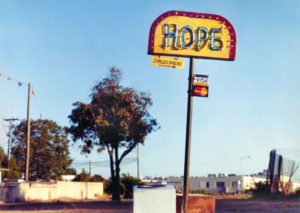
In Tracey Snelling’s artwork, neglected sites and stories become the focus of her attention. Weeds growing in the concrete cracks and an old piece of trash are treated not as things to avoid, but rather as details to explore. Influenced by film, landscape, books, and architecture, Snelling builds structures, which reference both popular culture and history. A photograph of an actual building might inspire a sculpture, which in turn may be photographed once again. Scale continually grows and shrinks, mutating and distorting each time, as Snelling moves between the real and the fantastical; and buildings take on psychological weight—enhanced by Snelling’s use of sound and video—as dramatic settings with lives and histories of their own.
In South Side, Snelling examined the hope and hopelessness that define life on the “wrong side of the tracks.” Among other work, the show included sculptures of a tenement apartment building, a mini-mart, and a revival tent, along with photographs of these and other sculptures taken in actual abandoned lots and other desolate settings. Like scenes from pulp novels and b-movies, these sites evoked narratives—as if asking, “what happened here?”—and gave voice to a distinctly American experience of poverty, fate, hope, and frustration.